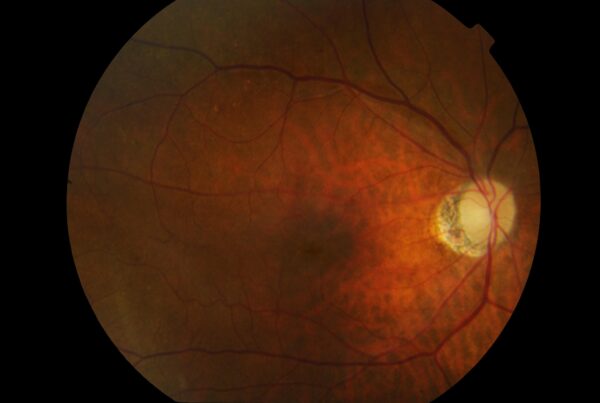Epiretinal Membrane / Macular Pucker
What is an Epiretinal Membrane?
Epiretinal membrane, sometimes called a macular pucker, is a thin sheet of fibrous tissue that develops on the surface of the macula (central part of the retina). It is an abnormal wrinkling of the retina, the film at the back of the eye.
The wrinkling of the retina causes distortion or blurring of vision. It typically affects the central area of vision and does not cause a loss of peripheral vision.
What causes it?
In the majority of people, the membrane forms as a result of shrinkage of the vitreous gel which occurs with ageing. The eye is filled with vitreous gel that helps maintain its shape. As we age, the vitreous slowly shrinks and pulls away from the retina. When this happens, it irritates and damages the macular area. This irritation causes the formation of scar tissue in an attempt to heal the damaged area. It is this scar tissue that results in the wrinkling and distortion of the macula known as epiretinal membrane.
Epiretinal membranes can sometimes occur following any eye surgery, retinal detachment surgery, laser surgery or cryotherapy (freezing treatment) for retinal tears.
It can also be associated by certain eye diseases or disorders such as diabetes, retinal vein occlusion, inflammation of the eye (uveitis) or injury (trauma) to the eye.
What are the symptoms?
-
Blurred vision
-
Double vision that is noticeable even with one eye covered
-
Distorted or crooked lines
-
Loss of depth perception
-
Difficulty reading/ driving/ seeing people’s faces
How is it diagnosed?
A comprehensive eye examination will need to be performed to confirm the diagnosis and may include OCT scan, retinal photography and fluorescein angiography.
Can it be treated?

Not all epiretinal membranes need treatment, but if the epiretinal membrane shows signs of progressive contraction and the vision is affected then many patients benefit from surgery to improve vision or prevent further loss of vision.
Vitrectomy surgery is the only treatment available to remove the membrane. The surgery is performed under local anaesthesia and usually takes under one hour.
Using microsurgical instruments, the vitreous gel is removed and the membrane is gently peeled and the scar tissue is removed from the retina, hence relieving the traction and reducing the distortion to the retinal surface. The vitreous is then replaced at the same time with clear fluid, which is similar to the fluid naturally produced by cells inside the eye.
Following a thorough eye examination and testing, our retina specialists will help decide if treatment is appropriate for patients.
